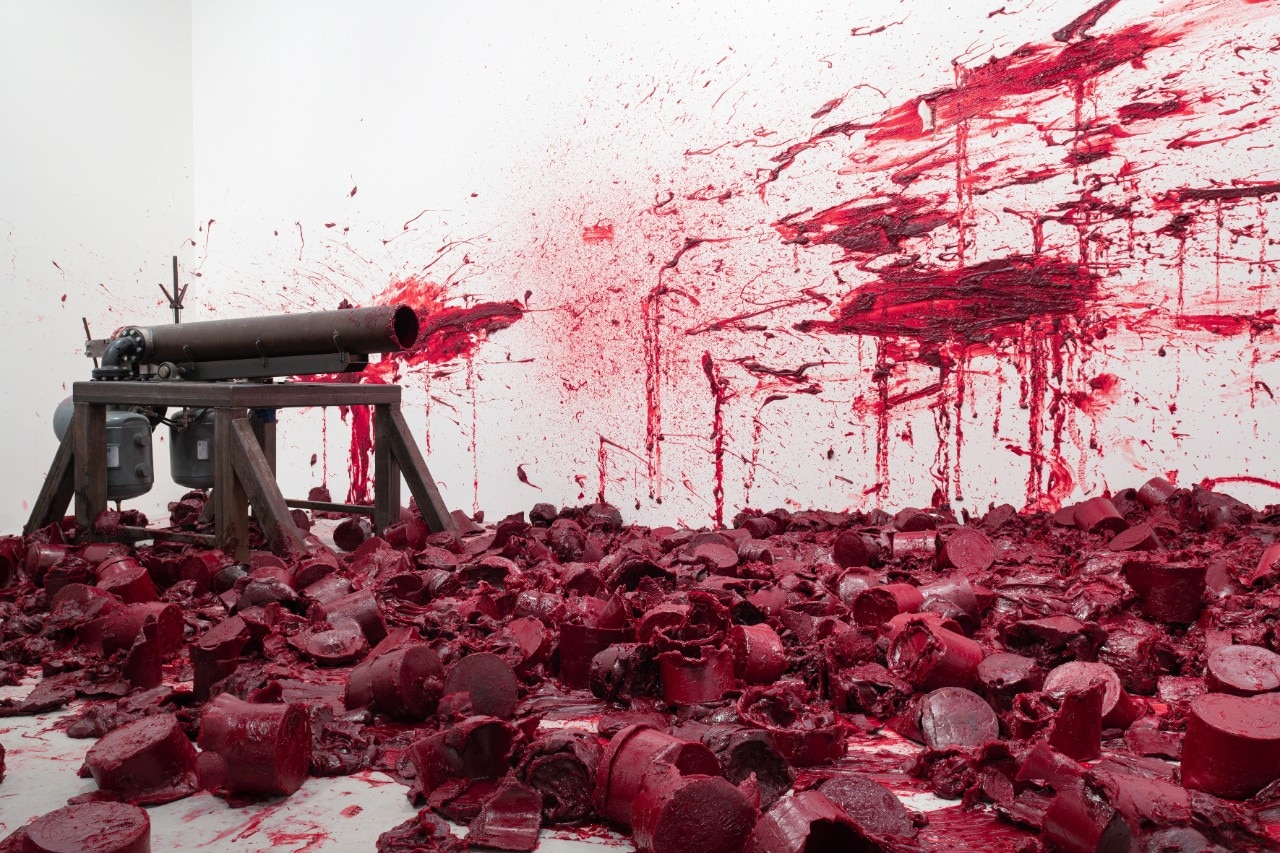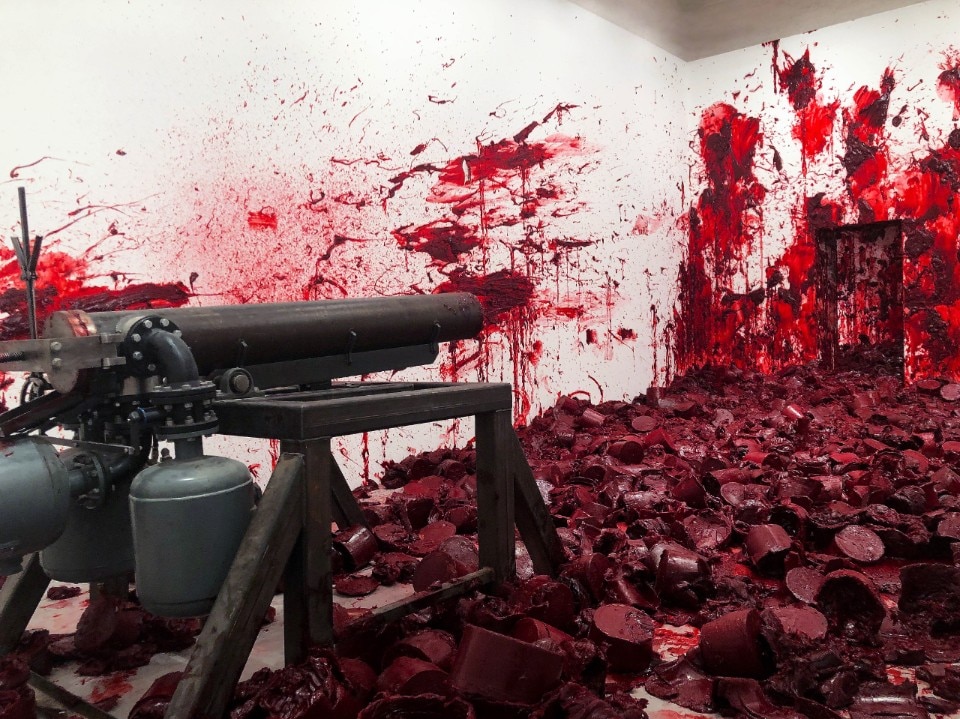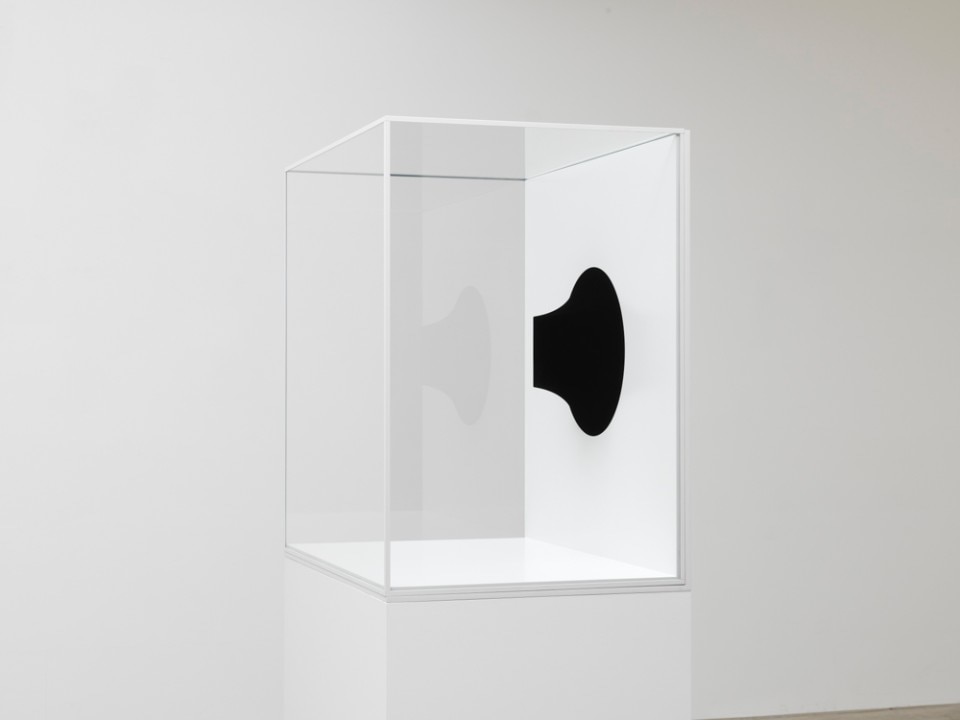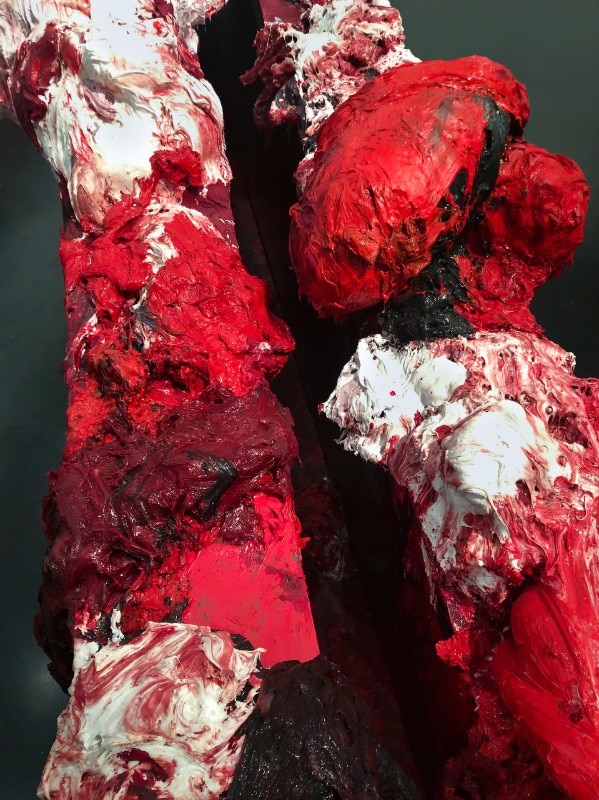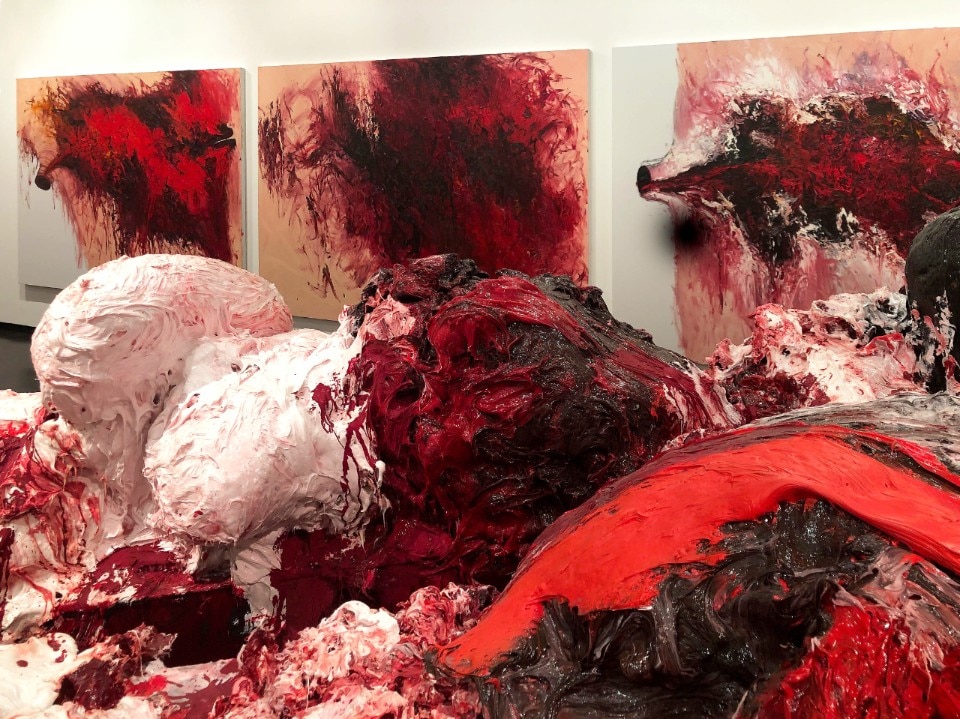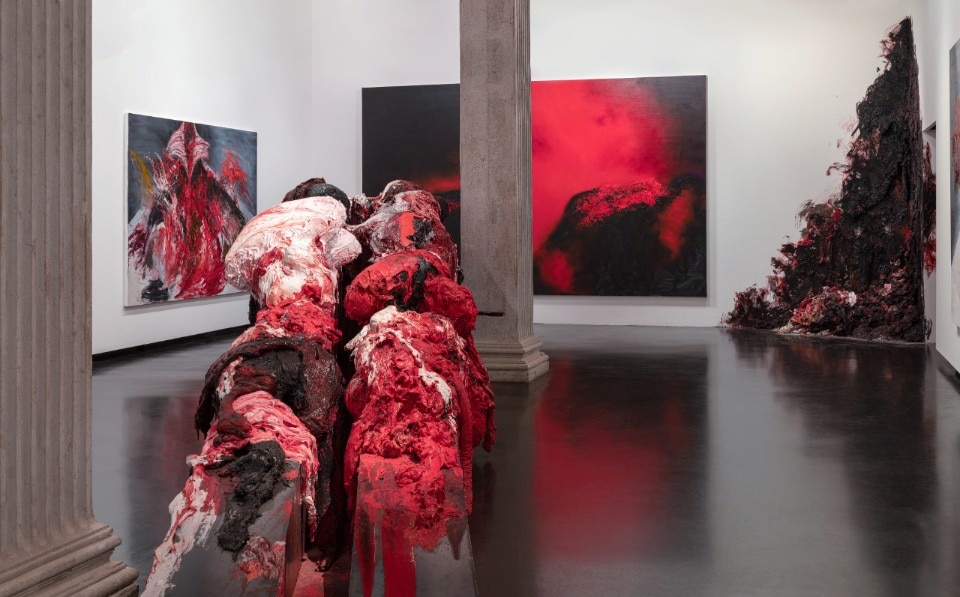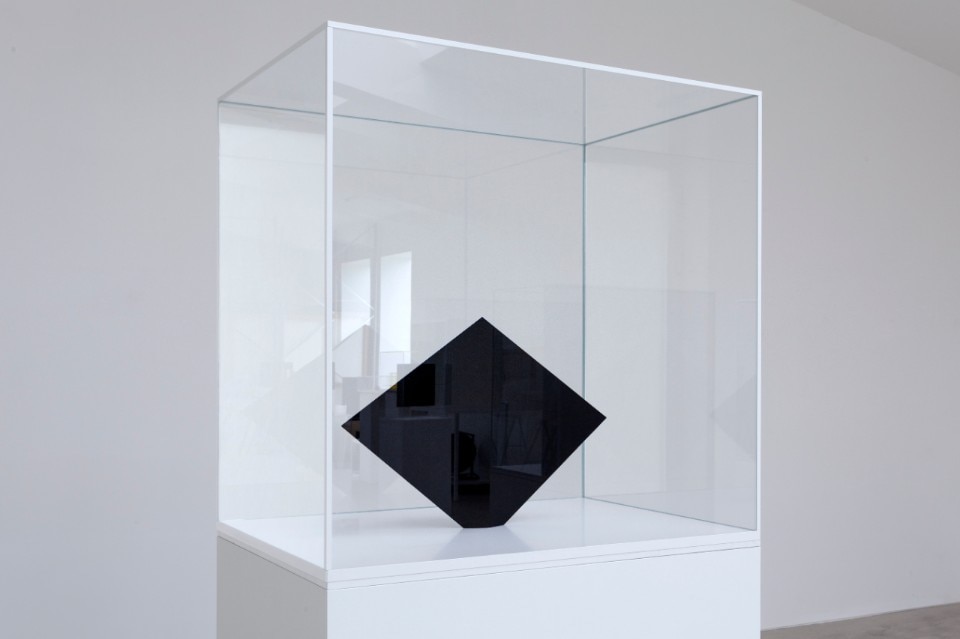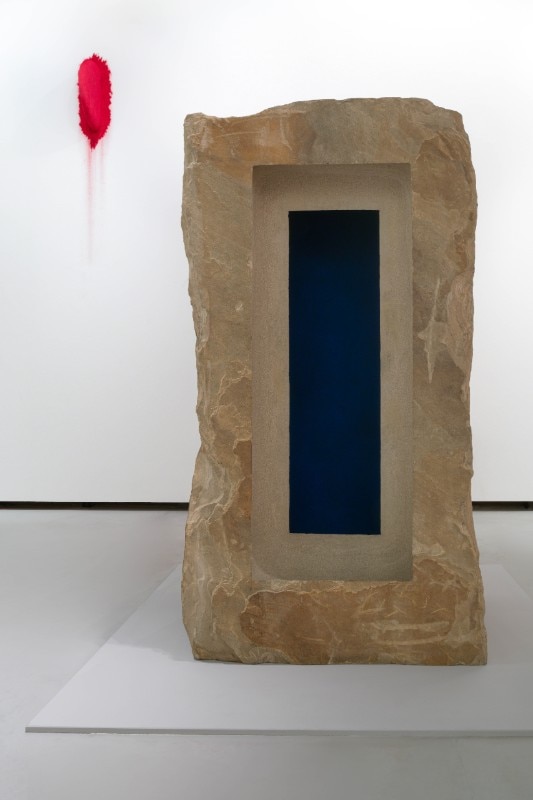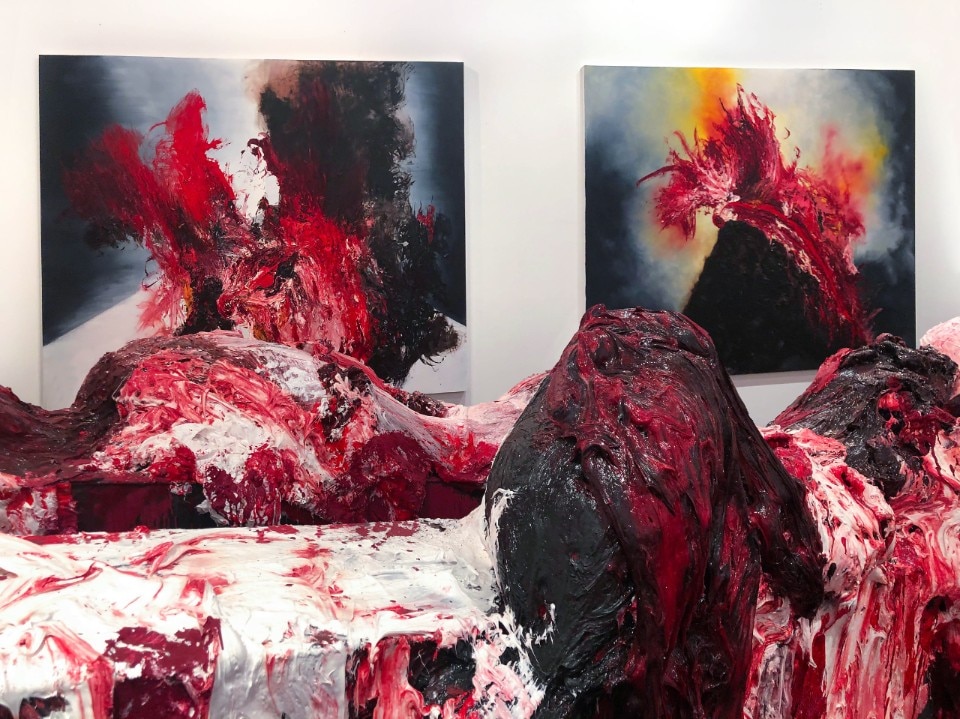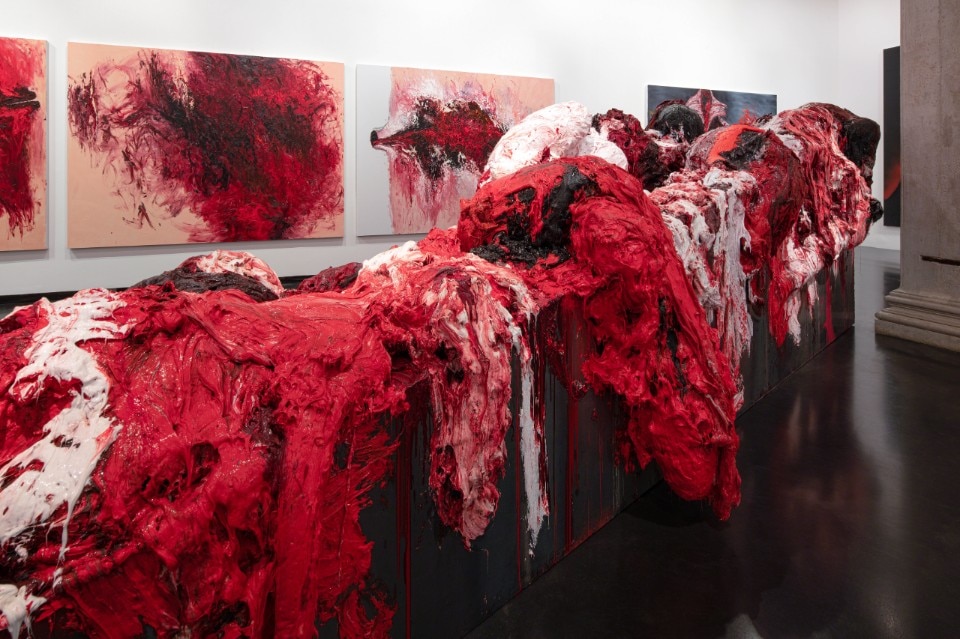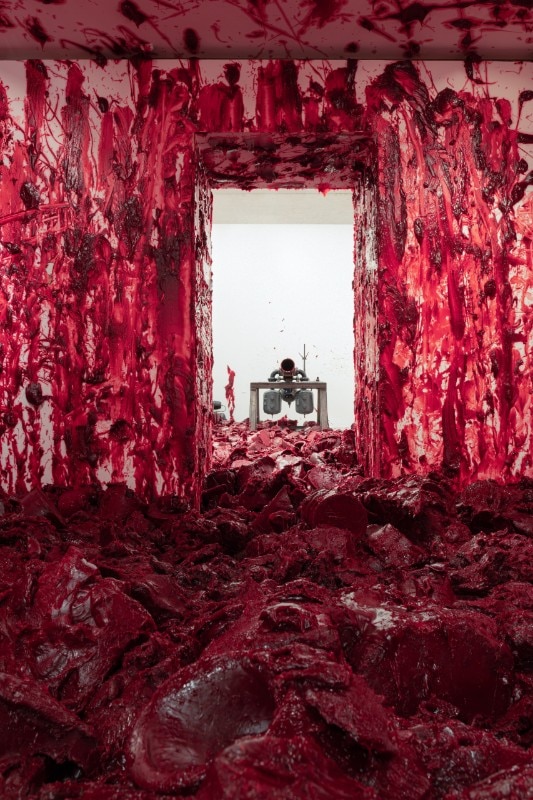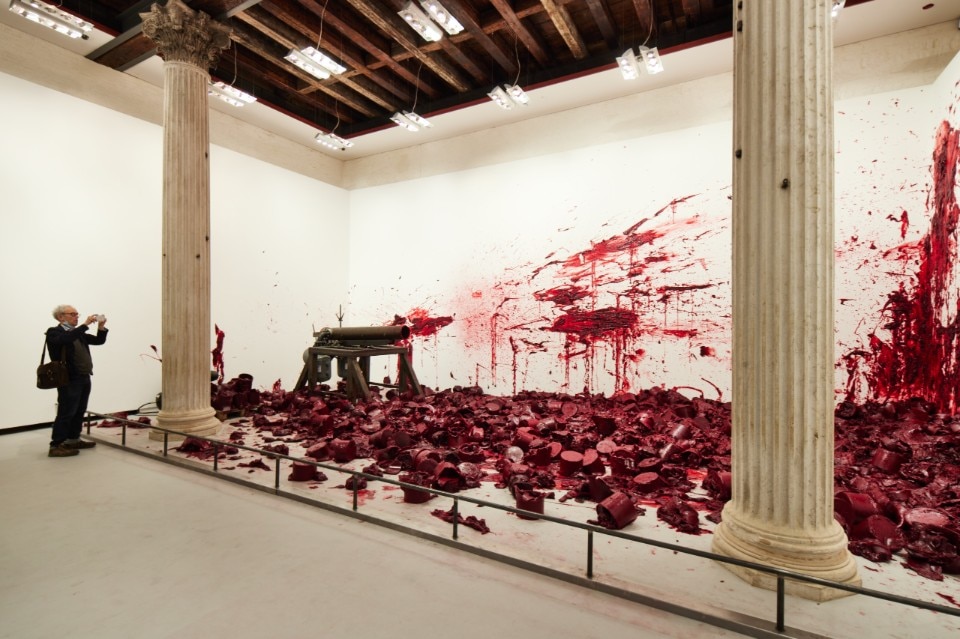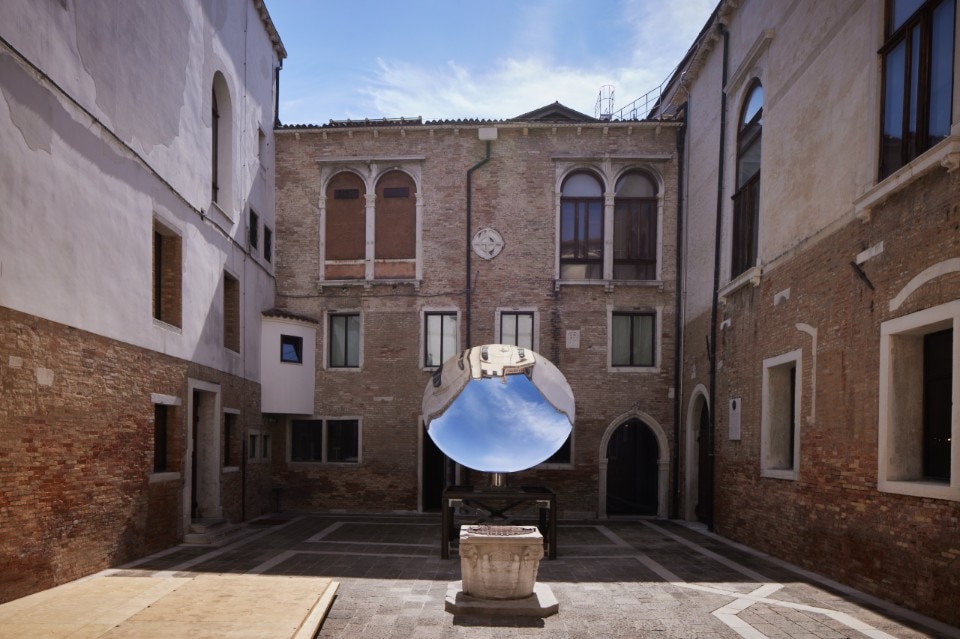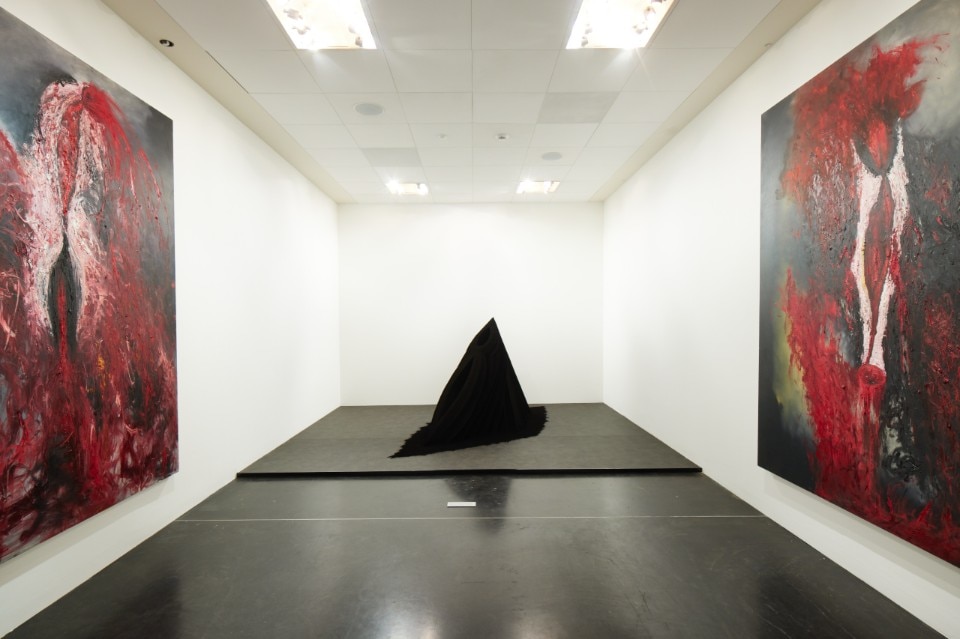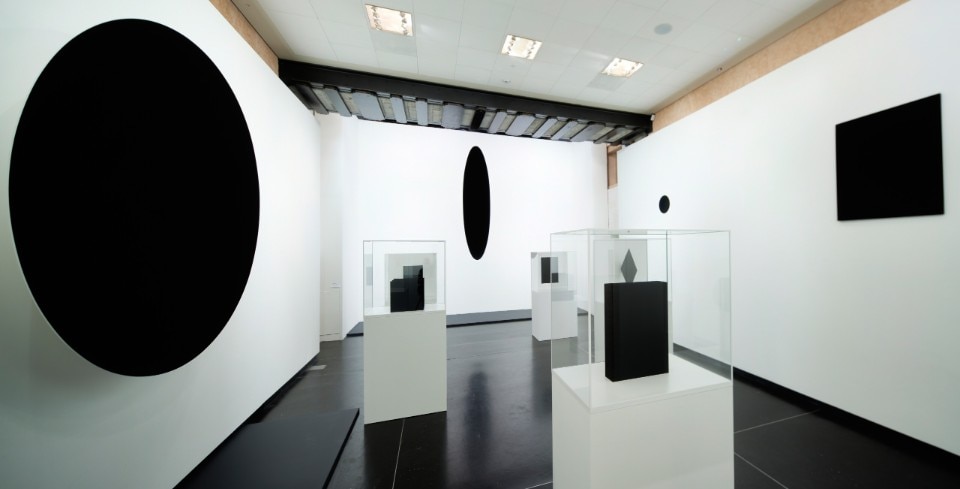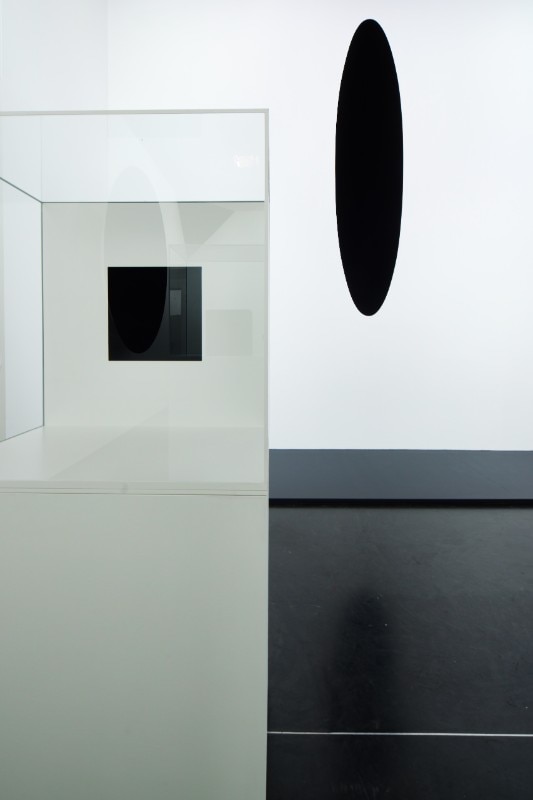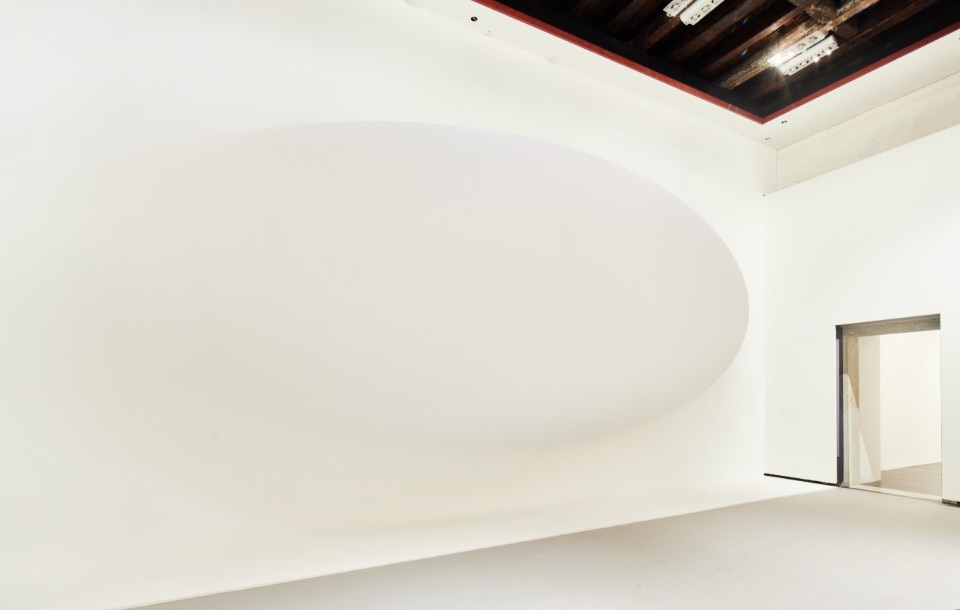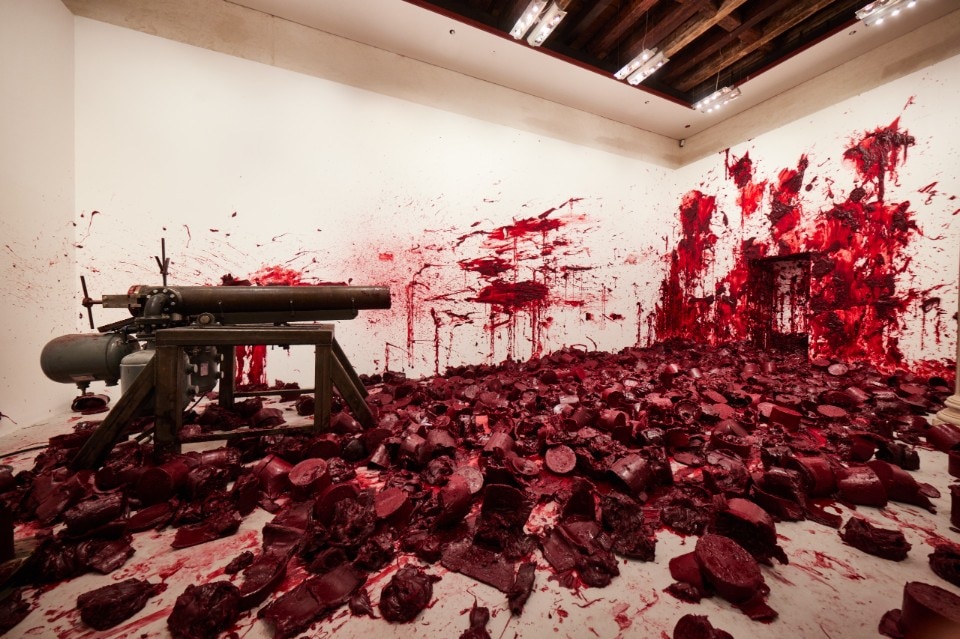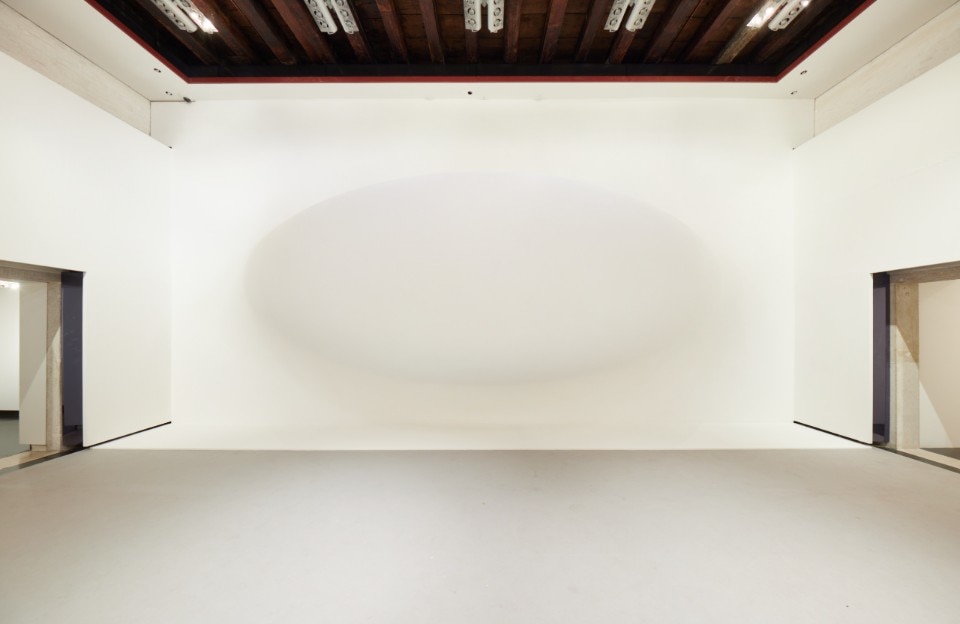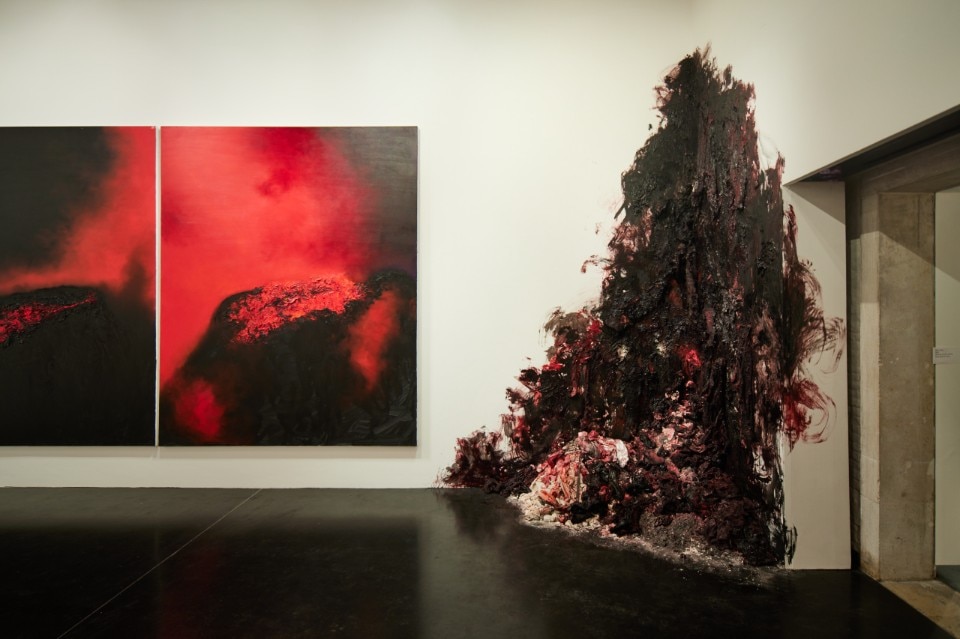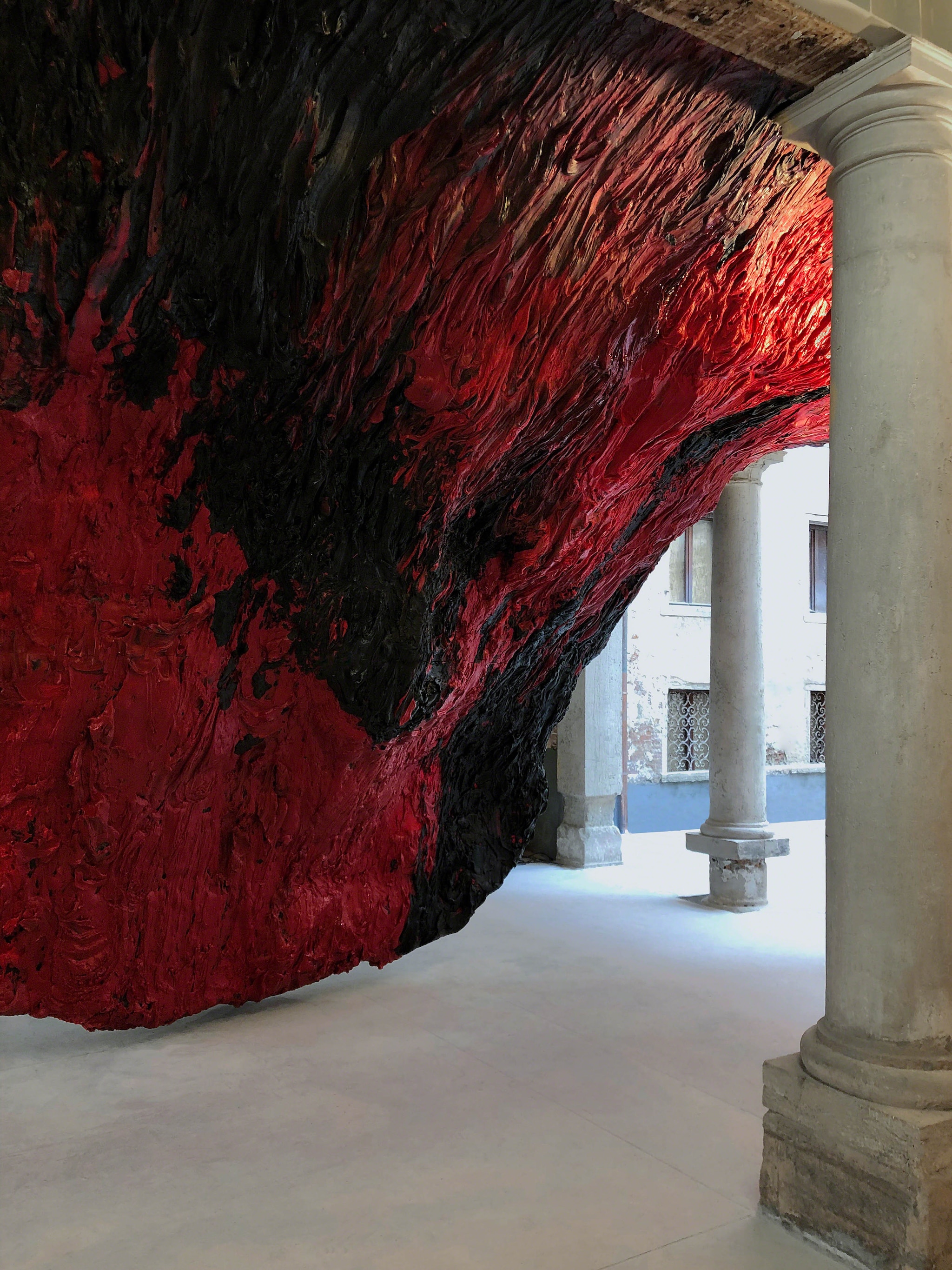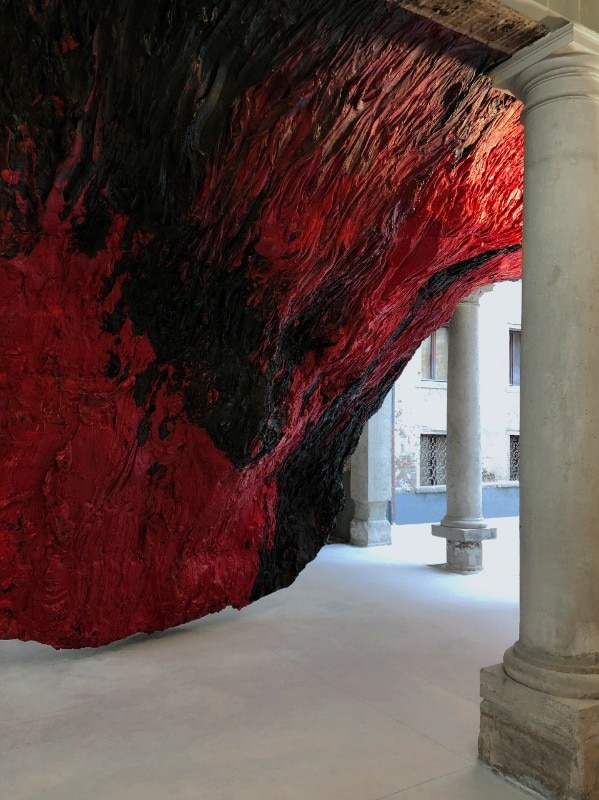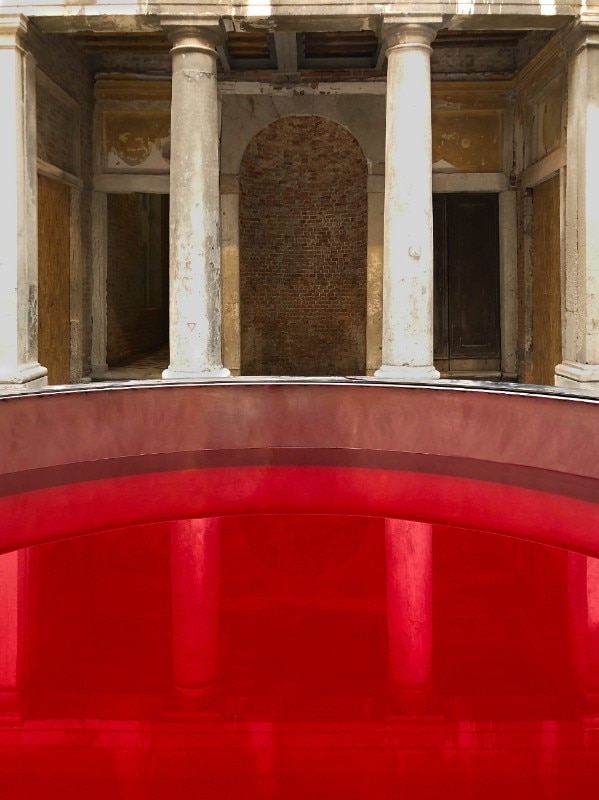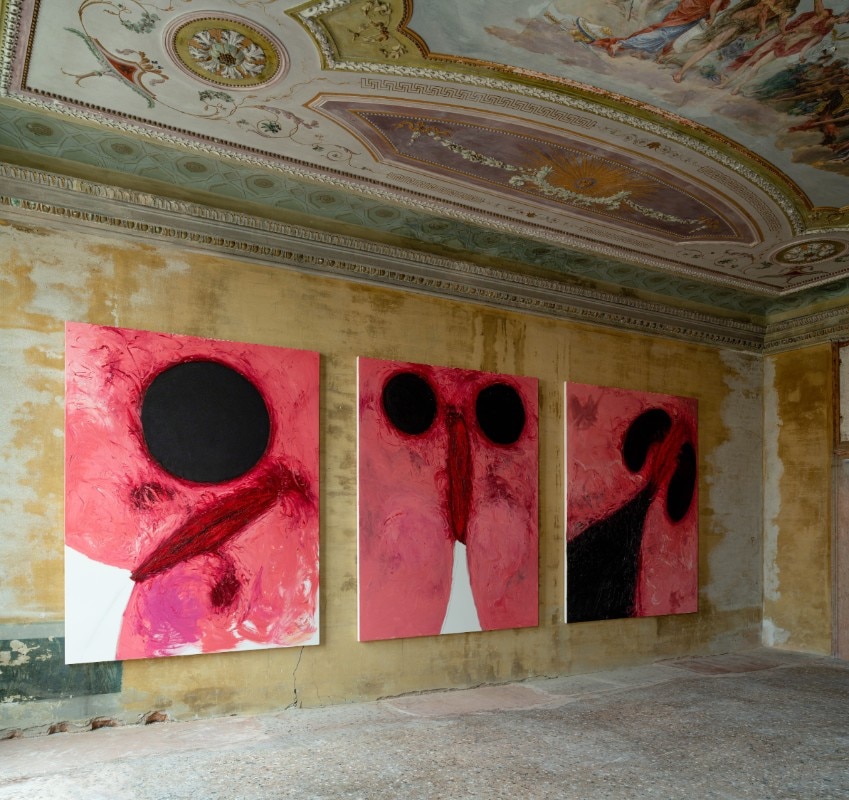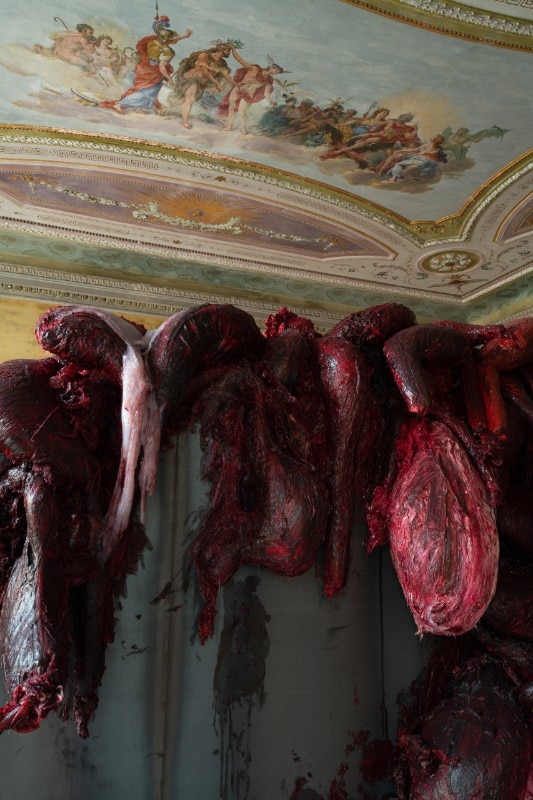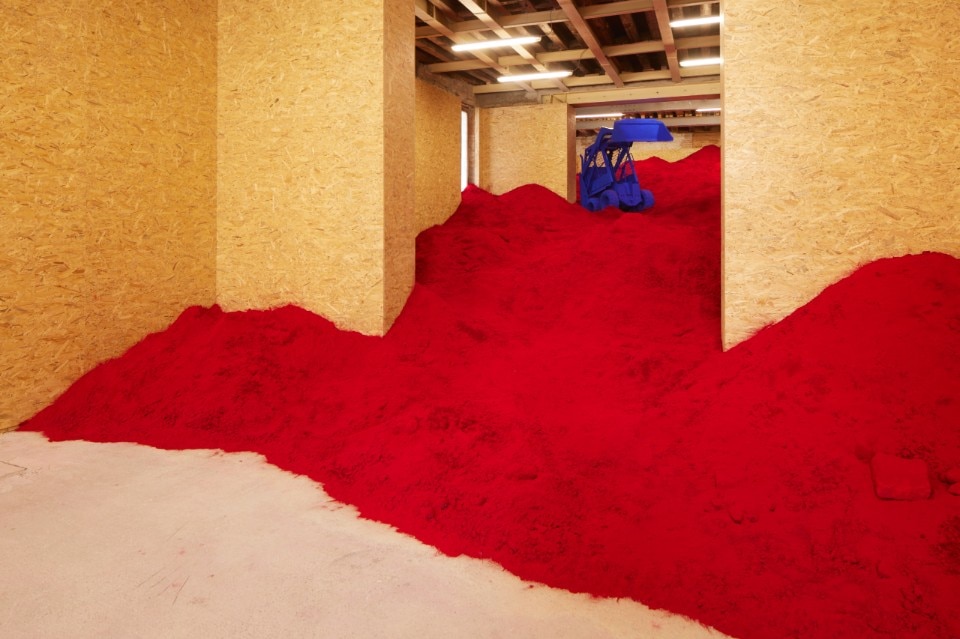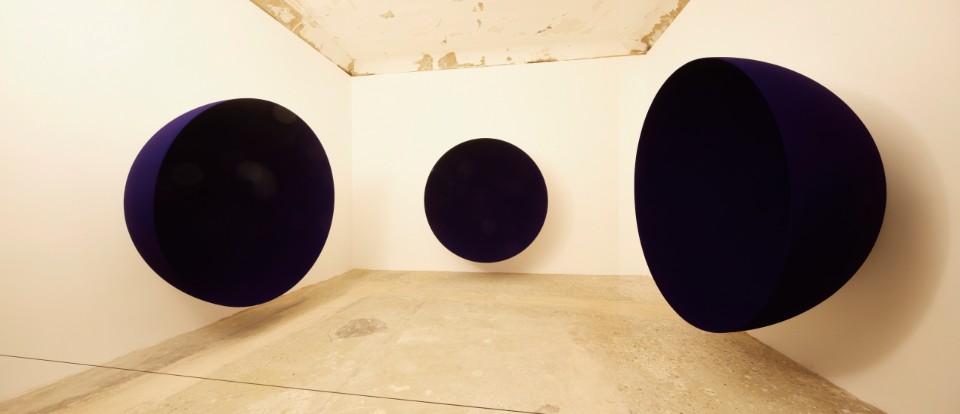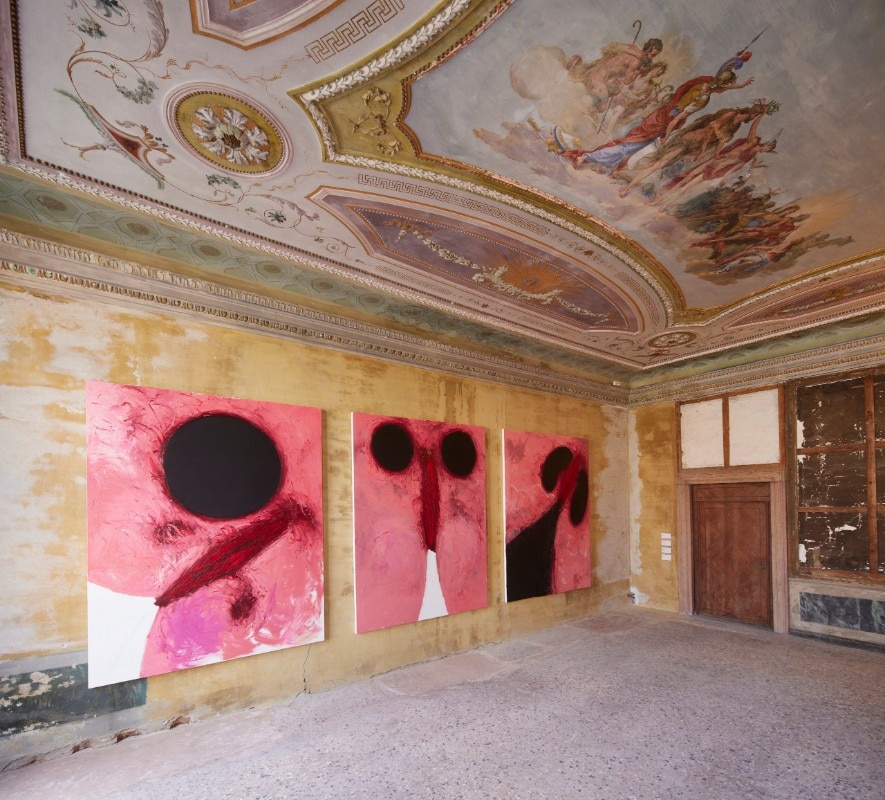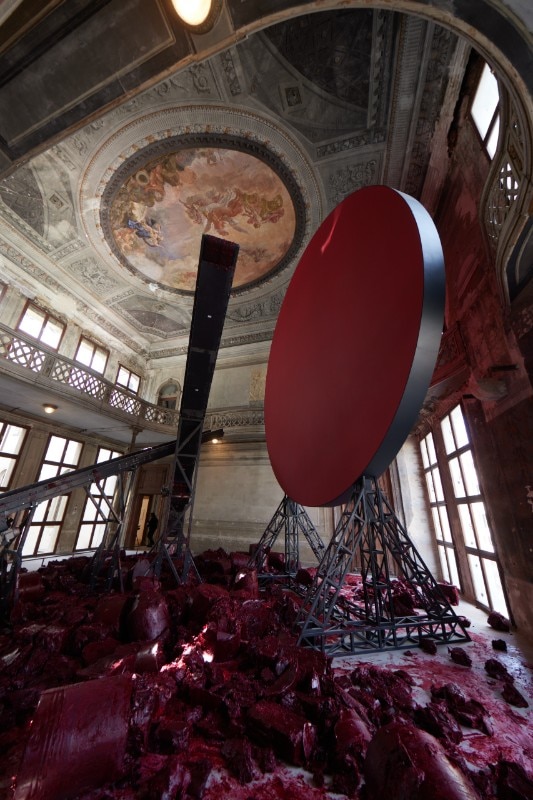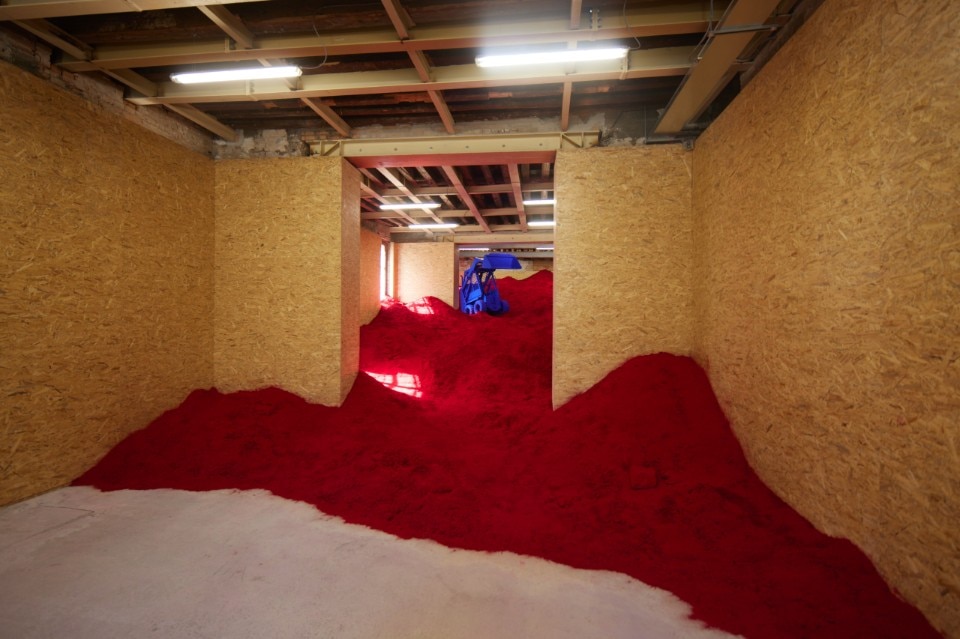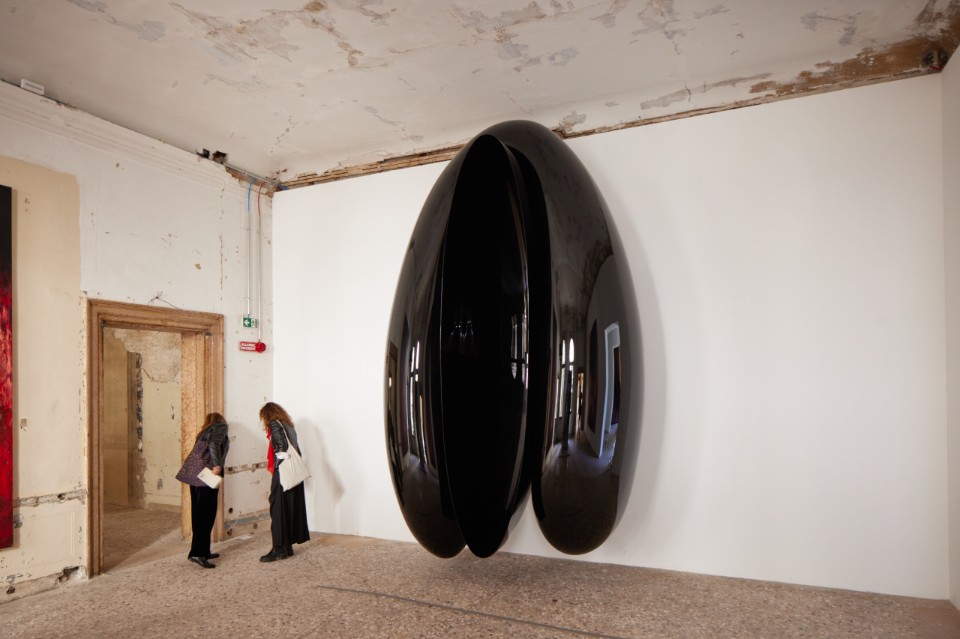Among the exhibitions in Venice in concomitance with the Biennale 2022, has also opened the large retrospective dedicated to Anish Kapoor curated by the director of the Rijkmuseum Taco Dibbits, which collects works by the artist from the 1980s to pieces made in recent months. A double exhibition that aims to show “the entire visionary range of Kapoor’s practice”, located at the reopened Palazzo Manfrin and at the Gallerie dell’Accademia.
Here, alongside some of the most celebrated masterpieces of Venetian painting, the most publicized – certainly the most Instagrammed – work of the exhibition is on display. It is Shooting Into the Corner, the installation in which a special cannon, created by Kapoor together with a team of engineers back in 2008, shoots red wax bullets of 11 kilos each. The result is a long strip of red matter smashed on the ground and on the walls that invades a large portion of the main room of the exhibition. The cannon, visible through an opening in the wall, is pointed straight at the visitor as he enters the exhibition. It looks like the scene of a massacre. Inevitably, it is linked to the war in Ukraine, the stone guest of this entire Biennale, although there is no explicit connection. The work, which dates back to the late noughties, is amplified by current events, it is probably the right one for the historical moment, but with its overexposure it also risks diminishing the overall value of the exhibition, hiding the rest. “Kapoor creates works that are realized in the moment we experience them,” explains curator Taco Dibbits. “Such works exist in a continuous becoming; we are called upon as witnesses to these objects for a single moment in the course of their generation or degeneration.”
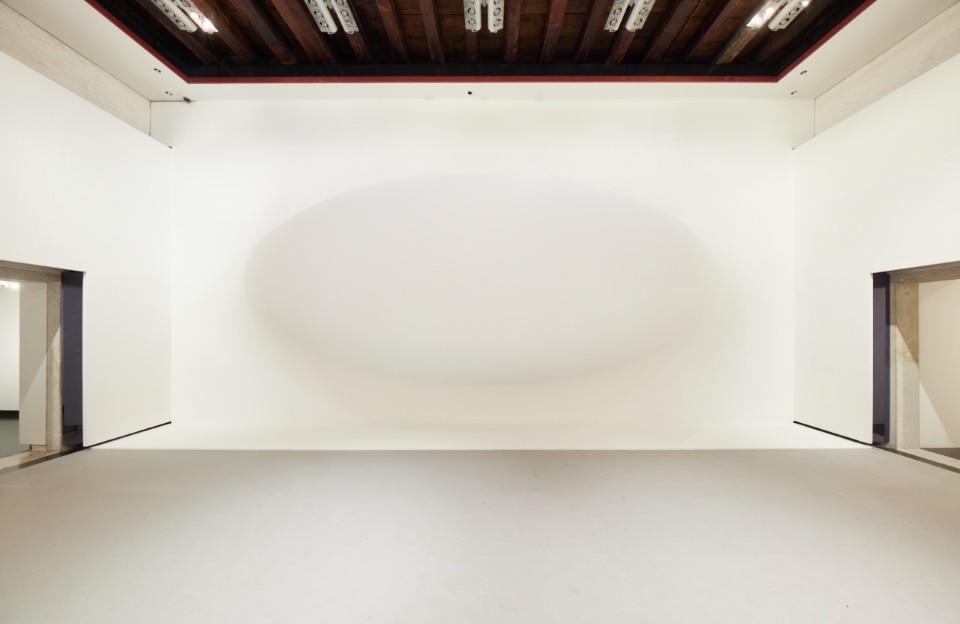
Another spectacular work on display at the Galleries is the brand new Pregnant White Within Me, a gigantic white bulge, a curvature in the wall that when observed from the front is almost unnoticeable – at least until you try to capture an image from your phone camera. Then there are the works made with Vantablack, the special black nanotechnology pigment capable of absorbing 99.965% of light, of which Kapoor has the rights for exclusive use in art.
“It is a great honor to be invited to confront myself with the collections of the Gallerie dell’Accademia in Venice; perhaps one of the finest collections of classical painting in the world,” commented the British artist. Known to the general public especially for his large public sculptures, the rooms of the Galleries dedicated to him show the various complexities of his art, alternating between disorienting geometric works that challenge the perceptive faculties of the observer, and streams of reddish organic matter that cover canvases, pour onto metal structures and literally erupt from the frames. The immediate reference is that of the flesh, a body whose skin has been removed and put on display, a dripping of organic-like tissues as if a butcher shop or an autopsy room had become a space of art. It is an obscure epiphany that embraces the spectator, not far – geographically and in sentiment - from the one set up by another great master of the contemporary, Alselm Kiefer: at short distance away, at the Doge’s Palace, with an entrance placed just beyond Tintoretto’s large canvas depicting the Battle of Salvore, the German artist has transformed the Scrutiny Room into a gigantic representation of life and death, where the latter dominates the scene with a coffin and grim reaper’s scythes hanging on the walls of paintings.
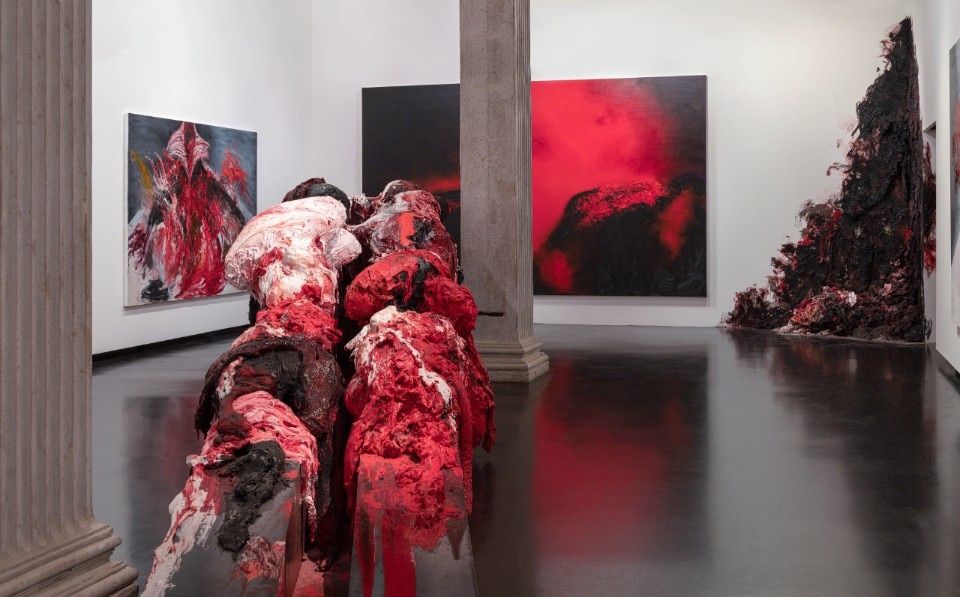
Between the end of the eighteenth and the beginning of the nineteenth century, the palace of Giacomo Manfrin, a Venetian nobleman who had accumulated a considerable fortune thanks to tobacco, became a tourist attraction, and in particular the piano nobile was transformed into an art gallery loved by such visitors as Canova, Manet and Byron.Many of the works preserved there, exactly twenty-one, at the death of the Count were transferred to the Gallerie dell’Accademia. Recently the palace has been purchased by Anish Kapoor and partially renovated. At the entrance, the monumental site-specific work Mount Moriah at the Gate of the Ghetto - the Venetian ghetto is located right in front of the palace - welcomes visitors. It is a dripping mass of silicone and paint, in black and red, that recalls the material flows also seen at the Galleries, as in the large paintings exhibited on the second floor, both the two-dimensional oil paintings and those made with resin, paint and silicone in which the material extends in space as a shapeless messy mass of flesh, dripping from the beveled chute of Split in Two Like a Fish for Drying or covering the ramp of Sacrifice. If at the Galleries the perception of Anish Kapoor’s works passed through the lens of the great paintings of the Venetian tradition exhibited in the other rooms, here the juxtaposition and continuity with the historical elements of the palace dominate - the floor, the ceiling frescoes, but also the inscriptions with telephone numbers and pencil drawings that are layered on the walls of this only partially restored building.
Also on the second floor of Palazzo Manfrin, in a large hall overlooked by a narrow balcony, with a life-size vintage Madonna that seems almost to be contemplating it, is another gigantic installation, Symphony for a Beloved Sun, with blocks of crushed red wax that recall those in Shooting into the Corner. This distressing triumph of red and Guignolese hues is broken up by a crucial work from the early 1980s, White Sand Red Millet Many Flowers, mirror works (very popular for selfies), black geometries on a white field in Vantablack and the cartoonish caterpillar of Destierro – here too, however, the red color is not missing, but it is a light red, free of any reference to organic masses, over which does not hover that aura of fragility and death that, once left the Palace or the Galleries, the visitor will probably take with him. But as already said and underlined by the words of Carlo Rovelli in the catalog of the exhibition published by Marsilio Arte, there is much more in Kapoor than the striking red explosion from which it is easy to be mainly attracted: “As it happened for the Renaissance artist”, writes the famous Italian physicist, who underlines the significant relationship between the artist and science, “his mastery serves to open our eyes to new interpretations”.


